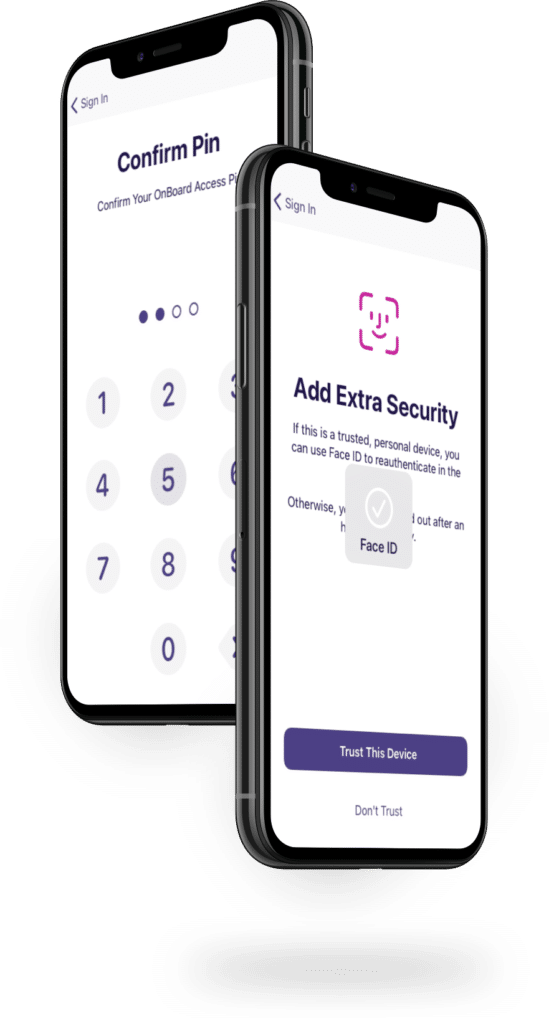Successful businesses rely on the continuation of many different components, from utilities and software to supply chain and equipment. So, what happens if an essential pillar of your business becomes damaged or cut off?
Planning for business continuity ensures you can keep your operations humming along should an unexpected event impact the organization. For many businesses, the board of directors is responsible for establishing a continuity plan.
What is Business Continuity?
Business continuity refers to the processes, procedures, and strategies organizations adopt to ensure essential business functions can continue or quickly resume in the event of an unexpected disruption.
Companies typically plan for business continuity through a process of risk assessment, followed by business impact analysis (BIA). Through this process, a business establishes contingency protocols, allowing them to respond to known risks and safeguard the business from disasters that might otherwise cause significant interruptions or losses.
Proper continuity planning for your business can minimize loss from unexpected disasters, like a cybersecurity attack, pandemic, or natural disaster
Efficiently track and document board decisions with our Meeting Minutes Template
How to Write a Business Continuity Plan
Preparing for business continuity involves writing a comprehensive continuity plan. This is a 5-step process that allows you to predict and then prepare to resolve any possible risk to your business’ integrity and continued operations.
1. Risk Assessment and Business Impact Analysis (BIA)
The first step of any business continuity plan is to perform risk assessment followed by business impact analysis (BIA).
Risk assessment is the process of identifying all possible threats to your business that might reasonably occur. Common risks may include:
- Location Risks
- Fire, flood, and physical damage to the building, including your stored equipment
- Blocked access to the building
- Interrupted utilities like power or water to the building or region
- Interrupted internet access to the building or region
- Weather Risks
- A natural disaster and regional evacuation
- A large storm that becomes dangerous between or during business hours
- Industry Risks
- Supply chain interruption
- Damaged or lost inventory
- Cybersecurity and Data Risks
- Cybersecurity lockdown attack, like ransomware
- Cybersecurity infection or intrusion and data theft
- Insider data theft
- Data loss due to file corruption
- Data loss due to human error
- Major software or cloud network failure
Business Impact Analysis takes each possible risk and compiles a report on the possible impact. For example, most businesses will be less impacted today by loss of access to their central office due to laptops and remote work during an interruption, but a cybersecurity attack or interruption of a cloud software network could spell greater disaster and service interruption.
2. Developing the Plan
For each risk, impact is assessed and then a crisis management plan is devised to prevent or minimize that impact. Businesses that need a physical location may establish a backup location, especially in regions prone to local storms. For cybersecurity disasters, it will be necessary to coordinate an advanced IT response to protect data, identify loss, mitigate loss, expel any malware or hacker presence, and enact data recovery procedures.
In some situations, it may be necessary to hold an emergency board meeting to build an adaptive strategy. In others, more technical or logistic solutions may need to be implemented through assigned duties and actions.
3. Testing and Training
Creating a plan is the first step, but you also need to ensure the plan will work should a disaster occur. Most crisis management plans involve assigning roles to lead or enact each stage of the plan. It may be necessary to train your team members to both know their roles and the best way to perform in a crisis.
We suggest holding periodic training routines to practice putting recovery plans into action and ensure everyone knows how to act quickly in the event of a real disaster.
4. Communication Strategy
While your recovery strategy is important, communication plays an equally vital role. Your communication strategy will alert those who need to take action, direct employees to alternate workflows if necessary, and manage external announcements regarding how the company is handling the disaster. This may include informing customers, or making announcements regarding how data security has been defended in spite of a breach.
5. Continuous Review and Improvement
Finally, make sure to regularly review and, if necessary, update your continuity plan. Risk factors, potential impact, and the best way to respond to potential disasters can change over time.
Business Continuity Standards
Rather than starting from scratch, most organizations use business continuity standards as guidelines to build efficient disaster response plans. The top three business continuity standards include ISO 22301, ISO 31000, and NFPA72
ISO 22301
ISO (International Standard for Organization) standard 22301 outlines how to develop an actionable and effective business continuity plan, as well as an ongoing continuity management system. The standard provides a process that can be implemented before and after risks occur.
ISO 22301 often includes the following steps:
- Analyze and identify risks
- Define roles and responsibilities
- Determine the crisis response plan for each risk
- Train key roles in emergency response tasks
- Implement an overarching Business Continuity Management System (BCMS)
- Review and revise plans
- Assess impact and improvements after a disaster and response.
ISO 31000
ISO 31000 is an international standard that provides a risk management framework for organizations of all sizes. This standard outlines processes, structures, and practices needed to identify, assess, and manage risks to achieve organizational objectives, while also taking into account uncertainty associated with them.
The core principles of ISO 31000 are:
- Leadership
- Integration
- Design
- Implementation
- Evaluation
- Improvement
ISO 31000 emphasizes the importance of implementing systems designed to detect potential threats before they occur, as well as establishing contingency plans in case incidents do happen. It promotes proactive approaches that allow organizations to anticipate future trends and changes in their environment.
NFPA 72
NFPA is the National Fire Protection Agency. NFPA 72 is the national fire alarm and signaling code. It provides guidelines on safety provisions regarding fire detection, signaling, and emergency communication.
This document outlines requirements for the design and installation of different types of fire detection, notification, control, and suppression systems, as well as evacuation plans.
It also encourages regular testing and maintenance schedules to ensure these devices function properly at all times. NFPA 72 promotes the use of multi-sensory alarms that can be heard, seen, and/or felt to provide maximum warning in case an emergency arises.
Business Continuity Starts With OnBoard
Business continuity is typically managed by a company’s executive board. Modern boards leverage board management software to design, collaborate, and iterate on business continuity plans, while also streamlining board communication and automating manual tasks.
OnBoard’s core platform features include:
- Agenda builder
- Real-time meeting analytics
- Secure messaging
- Task management
- Cloud-based functionality and storage
- Zoom integration
Get started with OnBoard today by downloading the free Board Meeting Minutes Template.
Frequently Asked Questions (FAQ)
Related Reading
The comprehensive blueprint for selecting a results-driven board management vendor.
Ready to upgrade your board’s effectiveness with OnBoard the board intelligence platform? Schedule a demo or request a free trial.
About The Author

- Adam Wire
- Adam Wire is a Content Marketing Manager at OnBoard who joined the company in 2021. A Ball State University graduate, Adam worked in various content marketing roles at Angi, USA Football, and Adult & Child Health following a 12-year career in newspapers. His favorite part of the job is problem-solving and helping teammates achieve their goals. He lives in Indianapolis with his wife and two dogs. He’s an avid sports fan and foodie who also enjoys lawn and yard work and running.
Latest entries
 Board Management SoftwareApril 23, 2024How to Form a Crisis Response Team (Step-by-Step)
Board Management SoftwareApril 23, 2024How to Form a Crisis Response Team (Step-by-Step) Board Management SoftwareApril 12, 2024Board of Directors Compliance Training: 5 Best Programs
Board Management SoftwareApril 12, 2024Board of Directors Compliance Training: 5 Best Programs Board Management SoftwareApril 10, 20245 Best Compliance Training Programs
Board Management SoftwareApril 10, 20245 Best Compliance Training Programs Board Management SoftwareMarch 28, 20245 Advantages of an Initial Public Offering
Board Management SoftwareMarch 28, 20245 Advantages of an Initial Public Offering






